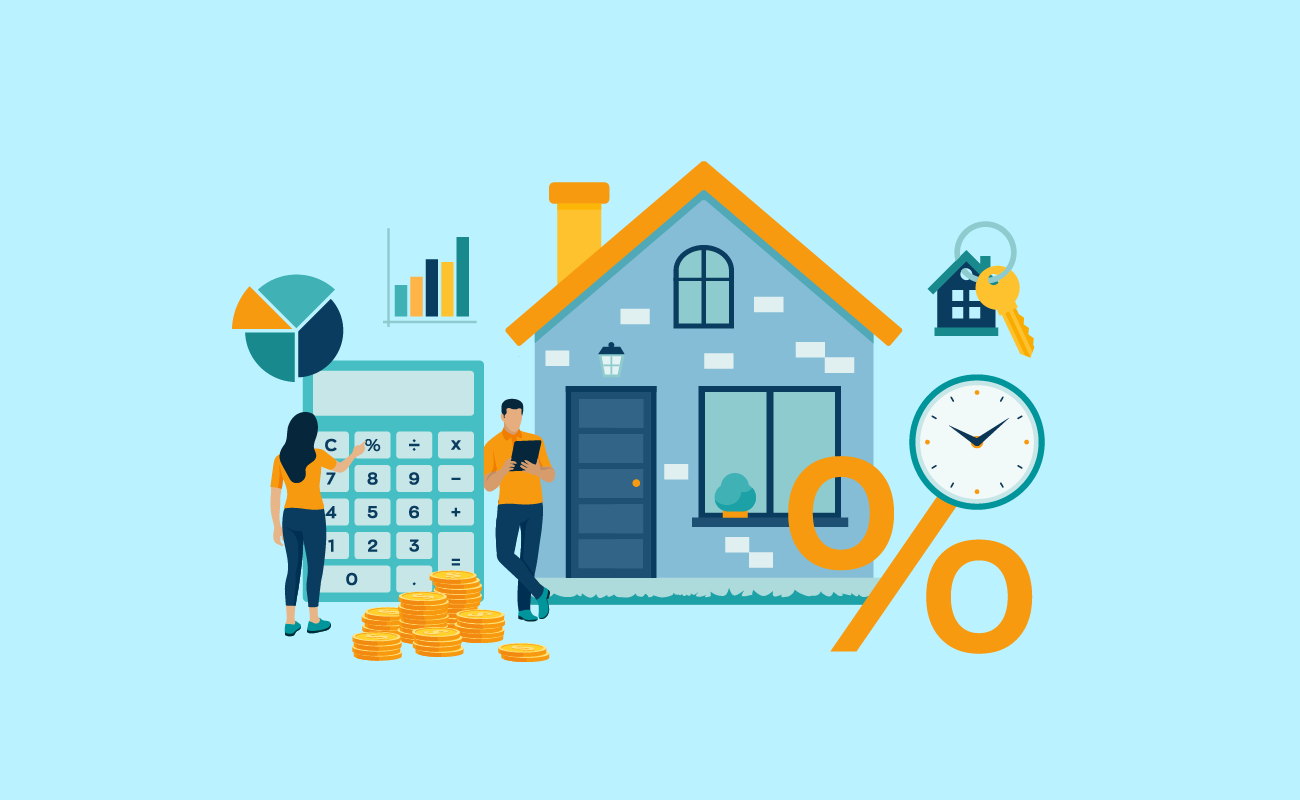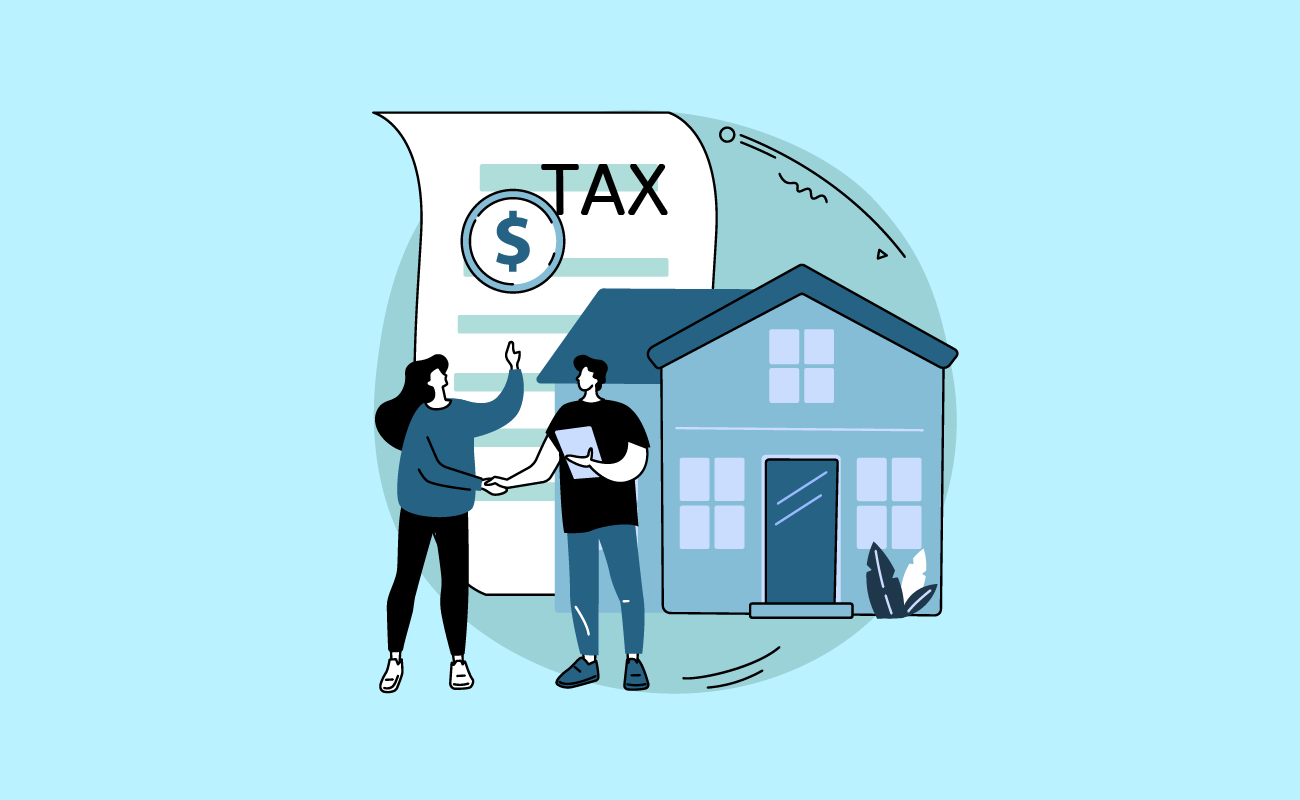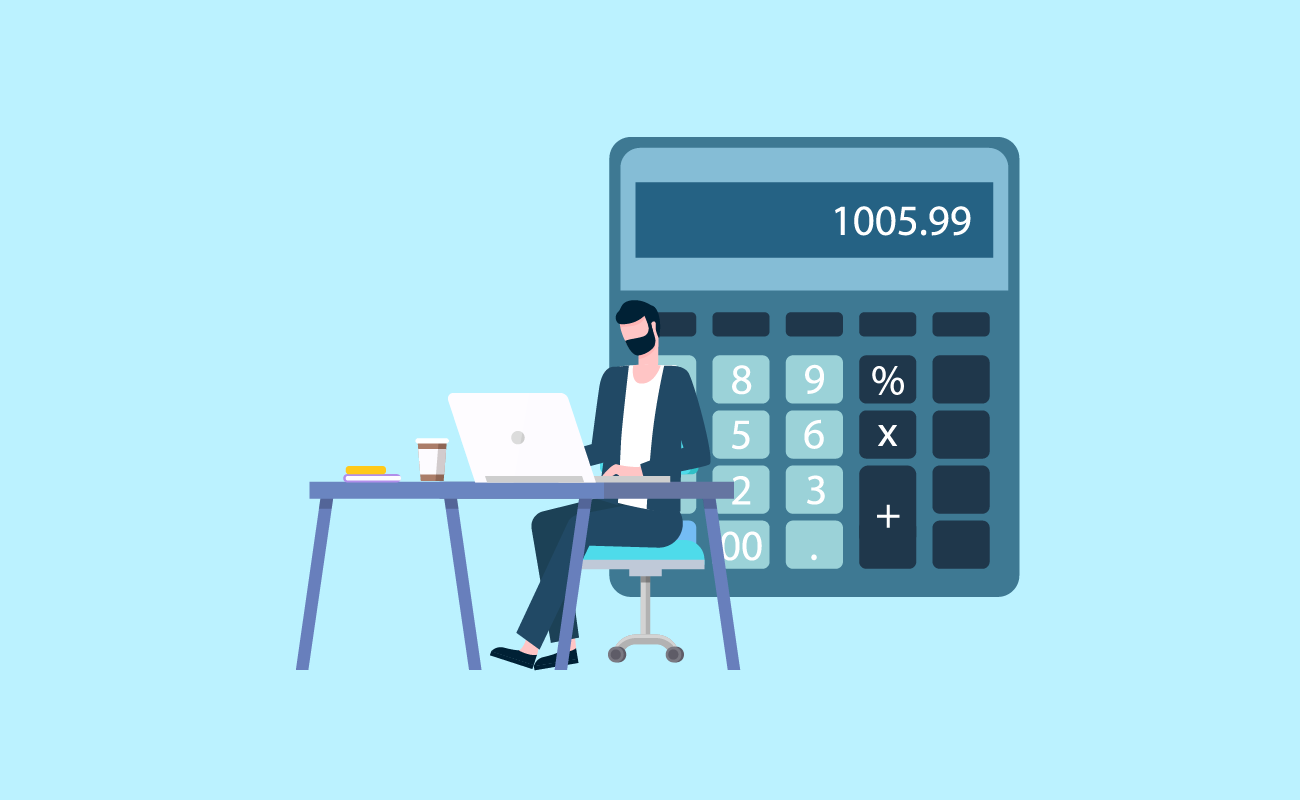
This calculator makes it easy for homeowners to decide if it makes sense to refinance their first and second mortgage (or old mortgage along with another high interest debt) into a new loan with a lower interest rate. It calculates how many months it will take for the refinance interest & payment savings to pay for the closing costs of the new loan, along with the monthly loan payments and net interest savings.
Please note this calculator is for straight refinances that do not extract any additional equity. Please use our cash out refinance calculator if you are cashing out equity when you refinance. If you are only refinancing a single mortgage you can use ither our standard mortgage refinance calculator or our simplified refinance breakeven calculator.

"Zero" Closing Cost Mortgage Refinancing?
All mortgages have closing costs. If a lender tells you there are "no closing costs" then the loan origination fees and any discount points are embedded either in the loan either as a larger loan size or at a higher rate of interest. Our calculator allows you to add closing costs to the loan or pay them out of pocket & calculates your break even date either way.
For your convenience we list current El Monte mortgage refinance rates to help homebuyers estimate their monthly payments & find local lenders.
Compare your potential loan rates for loans with various points options.
The following table shows current El Monte 30-year mortgage rates. You can use the menus to select other loan durations, alter the loan amount, change your down payment, or change your location. More features are available in the advanced drop down.

Home equity is the difference between how much you still owe on your mortgage and what your property is currently worth. Once you’ve built enough home equity, you can borrow against it to pay for major home renovations that further increase your property’s value. Borrowers can also use this money for other important expenses, such as to consolidate high-interest debts. This is possible by taking a cash-out refinance or obtaining a second mortgage such as a home equity loan or a HELOC.
According to ATTOM Data Solutions, in Q2 of 2020, an estimated 27.5% out of 55.2 million mortgaged homes were considered equity-rich in the U.S. It increased from 26.5% in Q1 despite the widespread economic crisis caused by the COVID-19 pandemic.
Having equity-rich property means you owe your lender 50% or less on your home’s current market value. You have the option to tap your home equity if ever you need money for major expenses. Apart from taking a second mortgage, equity-rich homeowners can also combine their first and second mortgage through consolidation refinancing. Instead of worrying about two loan payments, you can simplify your finances by paying for one mortgage.
Our guide will discuss the process of consolidate your first and second mortgage. Next, we’ll talk about how cash-out refinancing works if you’re planning to consolidate high-interest debts such as credit cards. We’ll tackle when mortgage consolidation makes sense, and it when may not be the best option. The guide will also rundown the requirements you must satisfy to obtain this type of loan.
Mortgage consolidation refinancing is the process of combining your first mortgage and second mortgage into one loan. This option is usually taken by homeowners who intend to obtain a rate and term refinance for their original mortgage. Homeowners roll in their second mortgage into the refinance to merge both loans. It allows you to reduce your rate and shorten your term. In other cases, homeowners consolidate their first and second mortgage along with their other debts such as credit cards.
When rates drop low enough, you can refinance to a much lower interest rate. Make sure the rate is lower than your first and second mortgage. This will considerably reduce interest charges over the life of your loan. Mortgage consolidation also makes budgeting more convenient. Not worrying about separate mortgage payments simplifies your finances and makes it easier to track each month.
When is it a cash-out refinance? Banks consider mortgage consolidation a cash-out refi if you end up taking more money than your first mortgage balance. This is the case when you consolidate your first and second mortgage along with your other debts. Under this arrangement, your loan must adhere to loan-to-value requirements. Lenders generally limit cash-out refis up to 80% of a home’s value.
Avoid Drawing Over the Limit Because withdrawing over the limit exacts greater risk for lenders, expect to be charged a higher rate. Your bank may still grant a loan if you borrow more than 80% between your first and second mortgage. However, the amount you can draw will be reduced. Moreover, you’re required to pay private mortgage insurance (PMI) on a conventional mortgage when your loan-to-value ratio is over 80%.
When is it a good time to consolidate your mortgage? Apart from timely low rates, it’s best to consolidate your first and second mortgage when you have not withdrawn money from your second mortgage in the past 12 months. Lenders also agree to consolidate mortgages when a borrower has just opened a second mortgage. Again, they do so under the condition that you have not drawn money from your second mortgage in the last 12 months. Not drawing money from your HELOC lowers your required equity by 20%.
Falling Mortgage Rates & Refinancing Mortgage rates have been steadily declining since 2019. But in 2020, the onset of the COVID-19 crisis further decreased mortgage rates to unprecedented lows. As a result, more consumers rushed to refinance their loans to take advantage of lower rates. In Q2 of 2020, refinances comprised 62% of all lending activity in the housing market.
By November 2020, Bloomberg reported that U.S. mortgage rate decreased to a record low for the 13th time in a year. The Federal Reserve continues to release data to stimulate liquidity in the mortgage market, helping keep home loans affordable for consumers.
A viable way to consolidate high-interest debt and lower your monthly payments is by tapping your mortgage’s home equity. When you take a cash-out refinance, you can consolidate your first and second mortgage and replace it with a new loan for more than you owe on your property. The difference goes to you in cash, which can be used to finance important costs or consolidate other debts. Likewise, you can simply take a cash-out refi even without consolidating your mortgage.
Unsecured debt such as credit cards typically come with high-interest rates. The average APR for a new credit card is 16.04% as of November 2020. Unsecured debts do not come with collateral, which means lenders have no means to recoup losses if borrowers fail to repay. Thus, banks impose much higher interest charges on credit cards, making it harder to pay off large balances. As your debt increases, your interest charges keep growing larger.
In contrast, the average mortgage rate for a 30-year fixed-rate refinance is only 2.750% in November 2020, while a 15-year fixed-rate refinance is at 2.375%. Because mortgages are secured debts, they have much lower interest rates compared to credit cards. Refinancing your mortgage to consolidate unsecured debt will substantially lower your rate. This results in considerable interest savings over the life of your loan.
Beware of the Risks When you consolidate debt with a cash-out refinance, you’re converting unsecured debt into secured debt. Failing to make monthly mortgage payments puts your home at risk of foreclosure. Expect your monthly mortgage payment to increase, which can be challenging if you’re tight on funds. To succeed, you must also address unhealthy financial habits that caused your debt issues. Make sure you have the self-control and discipline to prioritize debt payments.

Homeowners are eligible for mortgage interest deductions when they refinance a mortgage. This is a tax deduction incentive that helps lower the interest paid on your loan. However, this is only granted if the loan is used to build, purchase, or make improvements on your property.
Before the imposition of the Tax Cuts and Jobs Act (TCJA) in 2017, interest on up to $100,000 of second mortgage debt through HELOCs and home equity loans were tax deductible. This applied however the money was used. But after the TCJA was passed, tax deductions are only available if the money is used for a property.
The IRS states that you can deduct home mortgage interest on the first $750,000 of your loan. Borrowers who are married and filing separately can deduct interest on the first $375,000 of their debt. Meanwhile, homeowners who took their mortgage before the TCJA can deduct interest on up to $1 million if they are the head of the household. For those married and filing separately, they can deduct interest up to $500,000. The limit for the home mortgage interest deduction is scheduled to change back to $1 million after 2025.
The Adverse Market Refinance Fee The COVID-19 crisis caused the world economy to tumble into a recession. This brought a loss of approximately $6 billion for Fannie Mae and Freddie Mac. In August 2020, both government-sponsored enterprises announced the implementation of a 50 basis point Adverse Market Refinance Fee to be required by lenders.
Originally scheduled for September 1, the fee was delayed by the FHFA to December 1, 2020 to alleviate the shock on mortgage originators. Refinances with balances less than or equal to $125,000 are exempted from the Adverse Market Refinance Fee, including FHA and VA refis. Homeowners rushed to apply as early as October to steer clear of the December 1 deadline.
Because refinancing is essentially taking out a new loan to replace your existing mortgage, you must comply with credit checks and submit financial documents. Lenders will verify your information before you’re given approval. Be sure to prepare the following documents for your application:
Lenders also assess key indicators when they evaluate your refinance application. Applicants must satisfy the following qualifications to refinance and consolidate their mortgage:
To refinance into a conventional loan, you must have a credit score of at least 620. But note that a minimum qualifying credit score is not enough to get you a lower rate. To secure the most favorable rates and terms, you must have a high credit rating. You can improve your credit score by making sure to pay your bills on time. Reducing your outstanding debt will also help raise your credit rating. In the long run, having a strong credit profile will help you secure the best deals for future loans.
Loan-to-value ratio or LTV is a risk indicator that measures the percentage of a loan amount compared to the current market value of a house securing a loan. A lower LTV indicates you have greater equity on your property, which lowers default risk for lenders. Thus, you’re more likely to qualify for refinancing with lower LTV.
LTV is calculated by dividing the loan amount with the market value of a property. For example, let’s say a house’s market value is $100,000 and your current loan amount is $80,000. When we divide 80,000 by 100,000, its shows you have 80% LTV on your home.
For most conventional mortgages, lenders require an LTV of 80% or less for refinancing. This means you should have 20% equity or more on your home. Again, having 20% equity eliminates private mortgage insurance (PMI). In some cases, other lenders may accept as low as 5% equity. But note that this results in a higher interest rate, costly monthly payments, and added PMI.
Now, let’s suppose your home’s market value is $400,000 and the balance on your first mortgage is $300,000. Your resulting LTV for this scenario is 75%, which means you can refinance your mortgage and avoid PMI. However, if you include a second mortgage, which is $40,000 for instance, your LTV will increase to 85%. In this example, you’ll be required to pay PMI.
When Lower LTV is Required Some homeowners may have first and second mortgages that exceed conforming loan limits. If this is the case, expect lenders to require at least 70% LTV (30% home equity) when you refinance to consolidate your mortgage. Some lenders may even impose a much lower LTV depending on your credit score and other financial factors.
Debt-to-income ratio or DTI ratio is a percentage that measures your total monthly debt payments compared to your total monthly income. For refinances, this is mainly based on back-end DTI, which accounts for your housing expenses together with other debts such as car loans, credits card debts, etc. You have greater risk of defaulting on your loan with a high DTI ratio. It shows you’re overleveraged, indicating you are in no financial position to take on more debt.
According to the CFPB, a 43% back-end DTI ratio limit is crucial. This is the DTI limit that allows borrowers to obtain a mortgage. But depending on the type of loan, you may still qualify for a refi with a back-end DTI ratio of 50% (with compensating factors). Lenders may try to accommodate a borrower as much as they can. However, if you don’t have enough home equity, or if you have many major credit problems, your refinance application will be denied.
Besides your credit score, LTV, and DTI ratio, assess your financial disposition. Can you afford the costs of refinancing? Will you be able to afford higher monthly payments? If you think your budget is too tight, it’s likely better to retain your first and second mortgage. In 2019, the average mortgage refinance closing cost was $5,749, according to Closing Corp.
The Federal Reserve states that refinance closing costs range between 3% to 6% of your loan. Meanwhile, other financial advisors say closing costs can be 2% to 5% of your loan amount. For example, if your remaining loan is worth $250,000, your closing costs can be anywhere between $5,000 to $15,000. This is a considerable sum, so make sure to save enough funds.
Moreover, consider refinancing with your original lender. Because closing costs for new home purchases require similar documentation, it’s more convenient to refinance with the same lender. You won’t have a hard time gathering all new documents for your refi application. On top of this, refinancing with the same lender makes it easier to obtain a more favorable rate.
The cost of refinancing is also impacted by points assigned to your loan. Watch out for discount points and origination points.
Expect a Longer Processing Time Mortgage consolidation refinancing takes longer to process compared to regular refinances. If you apply right after your second mortgage was approved, many lenders have a waiting time of around 12 months to process your application. This takes longer than traditional mortgages because lenders scrutinize every detail in your financial history and your ability to repay.

Before refinancing to consolidate your mortgage, estimate how much it will cost. You must calculate your new monthly mortgage payment, your total refinance interest charges, and how many months it would take to breakeven on the closing costs. Using our calculator above, let’s try this on the example below.
Suppose your first mortgage (based on a 30-year term) has a remaining balance of $200,000 at 5% APR, with a principal and interest payment (P&I) of $1,600 per month. Then, your second mortgage has a balance of $50,000 at 6.5% APR, with a monthly P&I payment worth $600. When added, your total monthly payment is $2,200.
Now, you plan to refinance both loans into a 15-year term with a 4% APR. See the results below.
| Mortgage Consolidation Refinance | Loan Details |
|---|---|
| New Monthly Payment | $1,849.22 |
| Monthly Payment Change | $350.78 |
| Total Closing Costs (paid upfront) | $6,200.00 |
| Months to Breakeven | 26 months |
| Original Mortgages Total Interest | $99,781.92 |
| Refinanced Mortgage Total Interest | $82,859.57 |
| Interest Saved by Refinancing | $16,922.35 |
If you refinance your first mortgage with 5% APR and second mortgage with 6.5% APR into a new mortgage with 4% APR, your monthly payment will decrease by $350.78. If you keep your first and original mortgage, your total interest would cost $99,781.92. But if you refinance your first and second mortgage into one loan, your total interest costs will be reduced to $82,859.57. This saves you a total of $16,922.35 in interest payments.
In order for your refinancing to break even on costs and yield savings, you must stay in your current home for at least 26 months. That’s how long it will take for the monthly interest savings to offset the refinancing closing costs.
For the next example, let’s suppose everything remains the same except for your discount point and rate. You decided to purchase a 1.5 discount point, which reduced your refinance rate to 3.75% APR. Let’s review the results below.
| Mortgage Consolidation Refinance | Loan Details |
|---|---|
| New Monthly Payment | $1,818.06 |
| Monthly Payment Change | $381.94 |
| Total Closing Costs (paid upfront) | $7,450.00 |
| Months to Breakeven | 26 months |
| Original Mortgages Total Interest | $99,781.92 |
| Refinanced Mortgage Total Interest | $77,250.10 |
| Interest Saved by Refinancing | $22,531.82 |
In example B, if you refinance your first and second mortgage into a new loan with 3.75% APR, your monthly mortgage payment will be $1,818.06. That’s $381.94 more affordable than your original mortgage, and $31.16 cheaper than example A. However, your closing cost will increase by $1,250 compared to example A.
Next, your total refinance interest cost will be $77,250.10, which saves you $22,531.82. With example B, you’ll save $5,609.47 more in interest payments compared to example A. And just like example A, you must stay in your home for 26 months to breakeven on refinancing closing costs.
Both examples yield considerable savings if you refinance to consolidate your mortgage. However, if you can afford to purchase extra discount points, you’ll save more on interest charges if you choose example B.
If you can afford to consolidate your mortgage, you can achieve the following goals:
Refinancing allows you to change your loan’s payment structure. Perhaps you took a HELOC as your second mortgage several years back. HELOCs come with adjustable rates and provides revolving credit up to an approved limit. Having an adjustable rate means your payments will increase when market rates increase.
For example, during the draw period, your monthly payments were around $400 on a $150,000 credit line. But once the draw period ended, your monthly payments grew to $900. To steer clear of increasing payments, you can refinance your first mortgage and second mortgage into a fixed-rate loan. This ensures your monthly P&I payments remain the same. Securing a low enough rate will reduce your monthly payments.
Consolidating your mortgage is most beneficial when market rates are low. Maybe rates were way higher when you got a 30-year fixed mortgage. Once mortgage rates drop significantly, you should take the opportunity to refinance your loan.
For example, let’s say you obtained your 30-year fixed mortgage 15 years ago. In November 2005, the average mortgage rate for a 30-year fixed term was 6.33% based on data from Freddie Mac. But in November 2020, the average mortgage rate for a 30-year fixed mortgage is only 2.72%, according to the Federal Reserve (FRED). If you refinance today, you’ll definitely secure a much lower rate. And since you’re refinancing after 15 years, you can retain the same payment term by choosing a 15-year loan, which has an average rate of 2.28% in November 2020.
Let’s suppose your first mortgage has a mortgage balance of $250,000 at 6% APR, while your second mortgage has balance of $50,000 at 6.5% APR. Your monthly payment costs $2,200, while your total interest cost will be $254,242.04 if you keep your current mortgage.
Now, if you refinance both mortgages into a 15-year term at 2.75% APR, your monthly payment will be reduced to $2,035.86. Your total interest costs will decrease to $66,455.68. This saves you $187,786.36 on interest charges. Based on this example, it’s definitely beneficial to consolidate your mortgage in November 2020.
Refinancing to consolidate your mortgage allows you to shorten your payment term. This cuts years’ worth of interest costs, which maximizes your savings. But as a compromise, expect to make higher monthly payments. Though you spend more now, you’ll get to save more money in the long run.
For example, you have a 30-year fixed mortgage which you’ve paid off for 10 years, and a second mortgage which you need to pay for the remaining term. You have 20 years to pay off both your first and second mortgage. If you refinance both loans into a 15-year term with a low rate, you can shave off 5 years from your loan. See the table below.
| Mortgage Consolidation Refinance | Loan Details |
|---|---|
| New Monthly Payment | $2,214.22 |
| Monthly Payment Change | $214.22 |
| Total Closing Costs (paid upfront) | $6,800.00 |
| Months to Breakeven | 24 |
| Original Mortgages Total Interest | $249,287.48 |
| Refinanced Mortgage Total Interest | $118,559.99 |
| Interest Saved by Refinancing | $130,727.49 |
When you refinance your first mortgage with 6% APR and your second mortgage with 8% APR into a 15-year term with 5% APR, your monthly payment will be $2,214.22. This is $214.22 higher than your original monthly payment. However, you’ll remove 5 years off your remaining term. You’ll also save a total of $130,727.49 on interest costs. To breakeven on your refinancing expenses, you must stay for at least 24 months in your home.
Based on this example, you’ll save thousands of dollars if you consolidate your mortgage and choose a 15-year term. Just make sure you can afford the higher monthly payments.

Consider consolidating your first and second mortgage when general market rates are low. Chances are you’ll obtain a lower rate that can substantially decrease your total interest costs. You can also use it to shorten your payment term, though this might increase your monthly payments. Just make sure you have room in your budget for higher payments. Mortgage consolidation also greatly simplifies your finances, which only requires you to make one mortgage payment every month.
On the other hand, there are instances where refinancing to consolidate your mortgage is not advisable. Avoid this option if you only have a few years left to pay off your loan. Refinancing to consolidate your mortgage will needlessly extend your payment term, costing tens of thousands of dollars more on interest. Do not consolidate your loan if you cannot afford the closing costs, and if you cannot obtain a much lower rate. Finally, avoid refinancing your mortgage if your loan will require private mortgage insurance (PMI). This is an added expense that can cancel any savings from affordable monthly payments.
Explore conventional mortgages, FHA loans, USDA loans, and VA loans to find out which option is right for you.
Check your options with a trusted El Monte lender.
Answer a few questions below and connect with a lender who can help you save today!